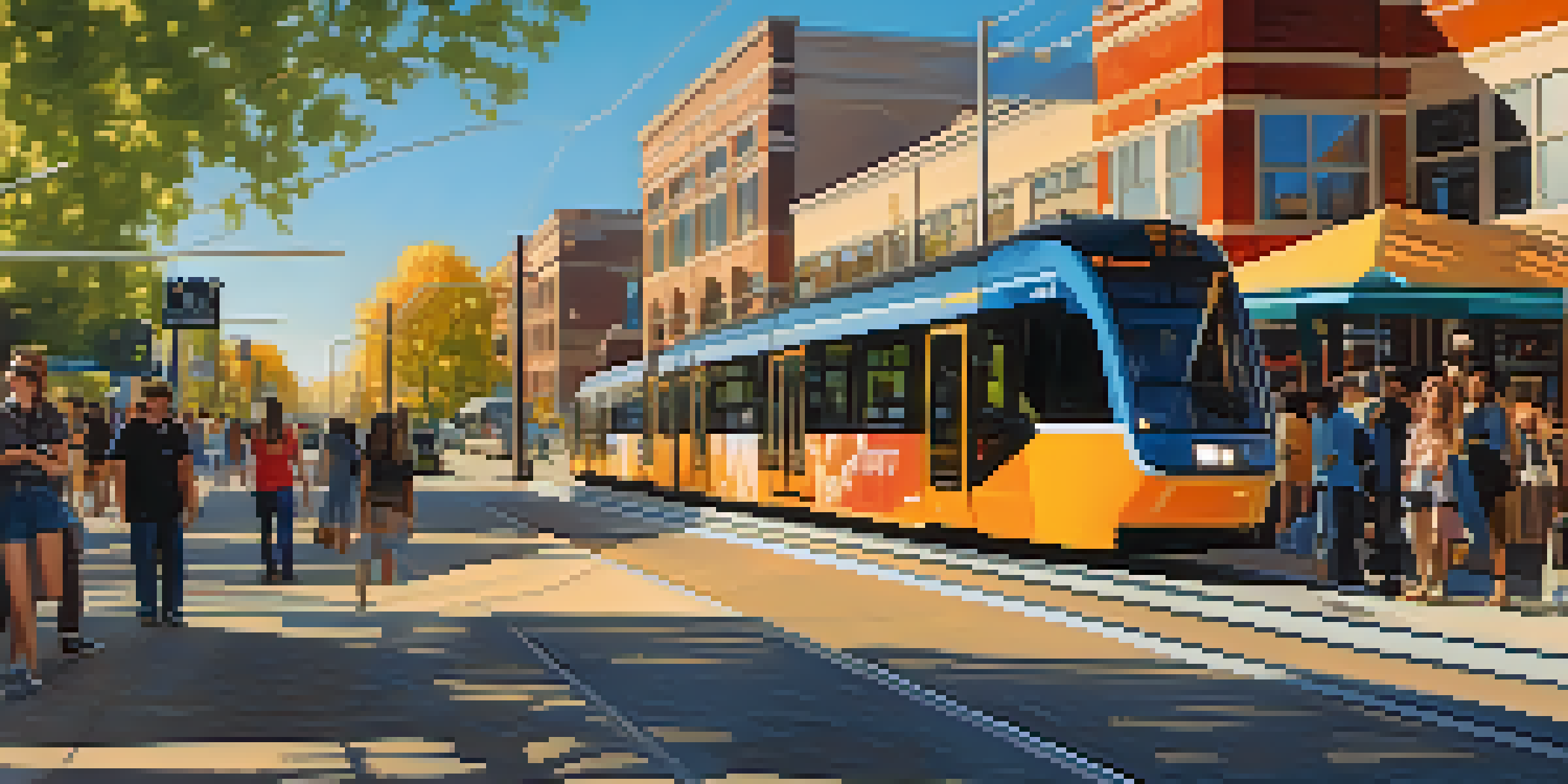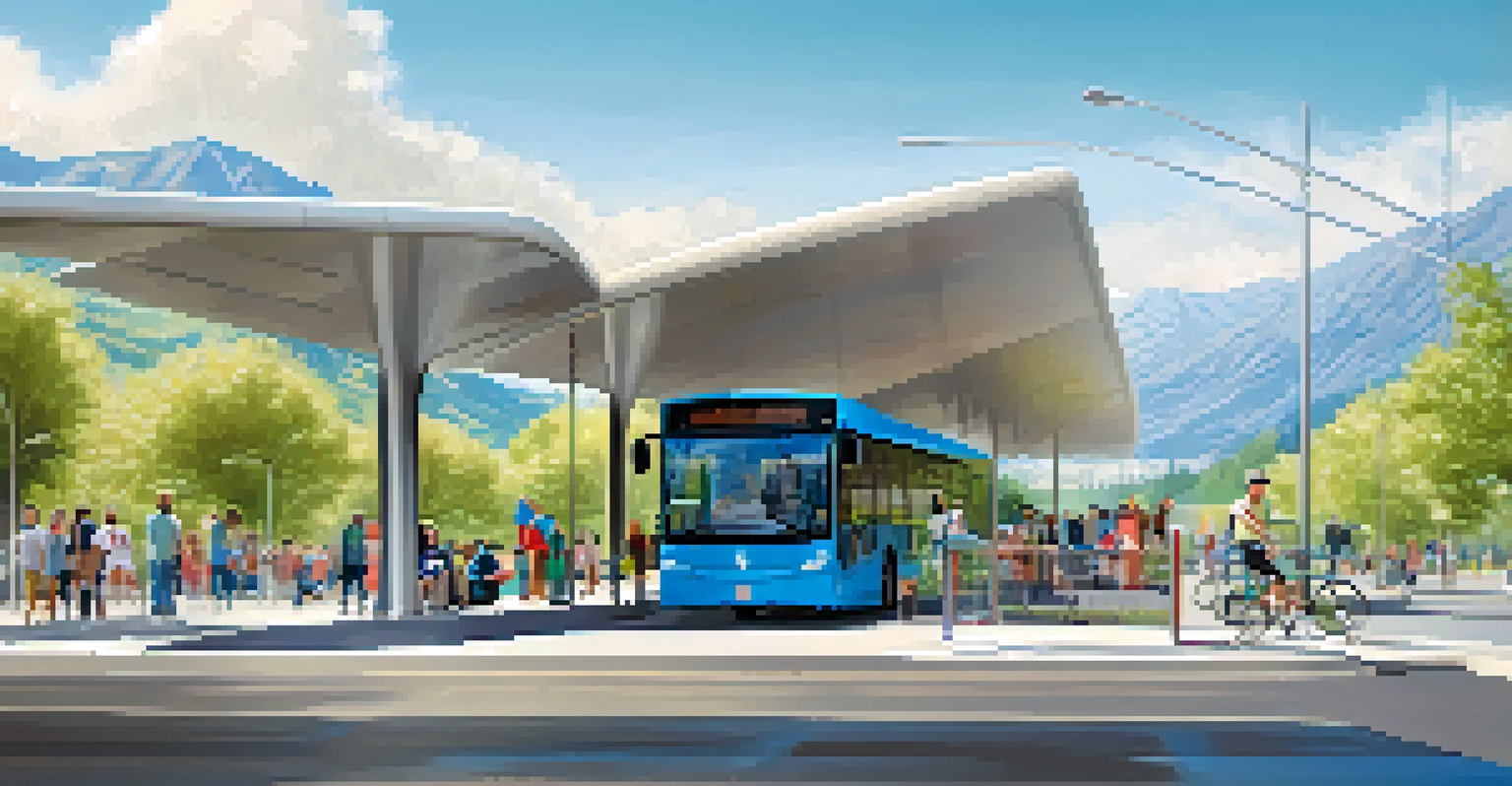Utah's Urban Transit: Cities Leading the Way in Mobility

Introduction to Utah's Urban Transit Landscape
Utah's urban transit system is undergoing a significant transformation as cities strive to enhance mobility. With a growing population and increasing traffic congestion, the need for efficient public transportation has never been more critical. This article will explore how various cities in Utah are leading the charge in innovative transit solutions that prioritize accessibility and sustainability.
Public transportation is a vital part of a sustainable urban environment, helping to reduce traffic congestion and improve air quality.
In recent years, urban planners and local governments have recognized that a well-connected transit system is essential for economic growth and community well-being. By investing in public transit options, cities can reduce their carbon footprint, improve air quality, and create vibrant urban spaces. Understanding these developments is key to appreciating how Utah is setting an example for other states.
From Salt Lake City to Provo, each area has unique challenges and opportunities when it comes to urban mobility. As we delve deeper into the initiatives and programs being implemented, we’ll uncover the strategies that are making Utah a model for urban transit in the United States.
Salt Lake City: A Leader in Urban Transit Innovation
Salt Lake City has been at the forefront of urban transit innovation, boasting an extensive network of public transportation options. The Utah Transit Authority (UTA) operates light rail, bus services, and commuter trains that connect various neighborhoods and suburban areas to the downtown core. This integration makes it easier for residents to choose public transit over driving, ultimately reducing congestion.

Recent projects, like the expansion of the S-Line streetcar, have made significant strides in enhancing mobility. The S-Line connects residents with popular destinations, including parks and burgeoning business districts, promoting economic development. Such investments not only improve accessibility but also encourage a sense of community as people gather around these transit hubs.
Innovative Transit Solutions in Utah
Cities like Salt Lake City and Provo are implementing creative public transportation options that prioritize accessibility and sustainability.
Moreover, Salt Lake City has embraced technology to improve the transit experience. Real-time tracking apps and smart payment systems simplify the process of using public transportation, making it more attractive to users. As the city continues to innovate, it sets a remarkable example for other urban areas looking to enhance their transit systems.
Provo: Emerging as a Model for Sustainable Transit
Provo is quickly becoming a model for sustainable urban transit, focusing on eco-friendly solutions that benefit both residents and the environment. The city has launched several initiatives aimed at promoting public transportation and reducing reliance on personal vehicles. With a strong emphasis on sustainability, Provo is setting a precedent for future development in urban mobility.
Transit is not just about getting from one place to another; it’s about connecting people to opportunities.
One of the key projects in Provo is the expansion of the bus rapid transit (BRT) system, which connects key areas within the city and beyond. This system is designed to provide efficient, reliable service that reduces travel times and encourages public transit use. By investing in BRT, Provo is not only improving mobility but also contributing to a greener future.
In addition to public transit improvements, Provo is fostering bike-sharing programs and pedestrian-friendly infrastructure. By creating a multi-modal transit environment, the city is encouraging residents to explore alternative transportation options, promoting a healthier lifestyle while reducing traffic congestion. Provo’s commitment to sustainable mobility is a shining example of what can be achieved with thoughtful urban planning.
Ogden: Revitalizing Transit Through Community Engagement
Ogden is taking a unique approach to urban transit by actively involving the community in its planning processes. By prioritizing public input and feedback, city officials are ensuring that transit solutions meet the needs of residents. This focus on community engagement has led to innovative transit options that reflect the preferences of Ogden’s diverse population.
The recent introduction of a new bus route, driven by community demand, showcases how Ogden listens to its residents. This route connects underserved neighborhoods to key employment centers and educational institutions, enhancing access to opportunities. As a result, more residents are using public transportation, contributing to a more integrated and connected city.
Community Engagement in Ogden
Ogden is revitalizing its transit system by actively involving residents in planning, ensuring that solutions meet local needs.
Additionally, Ogden is investing in infrastructure improvements that make transit more user-friendly. Upgrades to bus stops and transit centers are designed to enhance safety and comfort for riders. By combining community input with strategic investments, Ogden is revitalizing its urban transit system and fostering a sense of pride among residents.
Sandy: Embracing Technology for Enhanced Mobility
Sandy is embracing technology to enhance urban mobility, focusing on smart solutions that improve the user experience. The city has implemented various tech-driven initiatives, such as mobile apps for real-time transit updates and digital signage at bus stops. These advancements make it easier for residents to navigate the public transit system and plan their journeys efficiently.
Moreover, Sandy has invested in electric buses as part of its commitment to sustainability. These eco-friendly vehicles not only reduce emissions but also offer a quieter and more pleasant ride for passengers. By incorporating green technology into its transit fleet, Sandy is paving the way for a cleaner, more sustainable future.
The city's efforts extend beyond just improving transit services; they also prioritize connectivity between different modes of transportation. Sandy is working on creating seamless transitions from buses to light rail, making it easier for residents to travel across the region. This holistic approach to urban mobility demonstrates Sandy's commitment to creating an integrated transit system that meets the needs of its residents.
Conclusion: A Bright Future for Utah's Urban Transit
The future of urban transit in Utah looks promising, with cities like Salt Lake City, Provo, Ogden, and Sandy leading the way in innovative solutions. By prioritizing community needs, sustainability, and technological advancements, these cities are setting a standard for public transportation that other states can emulate. The ongoing investments in transit infrastructure will not only enhance mobility but also contribute to a more sustainable environment.
As the demand for urban transit continues to grow, it is crucial for Utah's cities to maintain their momentum. Continued collaboration between government agencies, local communities, and transit authorities will ensure that public transportation remains a viable option for all residents. Together, these stakeholders can create a system that supports economic development and improves the quality of life.
Technology Enhancements in Sandy
Sandy is leveraging technology and eco-friendly practices to improve urban mobility, making public transit more efficient and sustainable.
Ultimately, Utah's commitment to urban transit innovation is not just about transportation; it's about building connected communities. By fostering an environment where public transit is accessible and attractive, Utah is paving the way for a future where mobility is seamless and sustainable for everyone.